.jpg)
These days, Kinh Mon people are harvesting cassava. Considered as “golden tubers” because together with some other specialty plants such as yellow sticky rice, bananas, onions, garlic… cassava is contributing to bringing high economic value to the people here.

Taking us on a tour of the vast cassava field where the vines had been cut cleanly, Mr. Nguyen Duc Minh, Chairman of the Farmers' Association of Thuong Quan Commune, said that the vines were cut to make it easier for people to harvest the tubers.
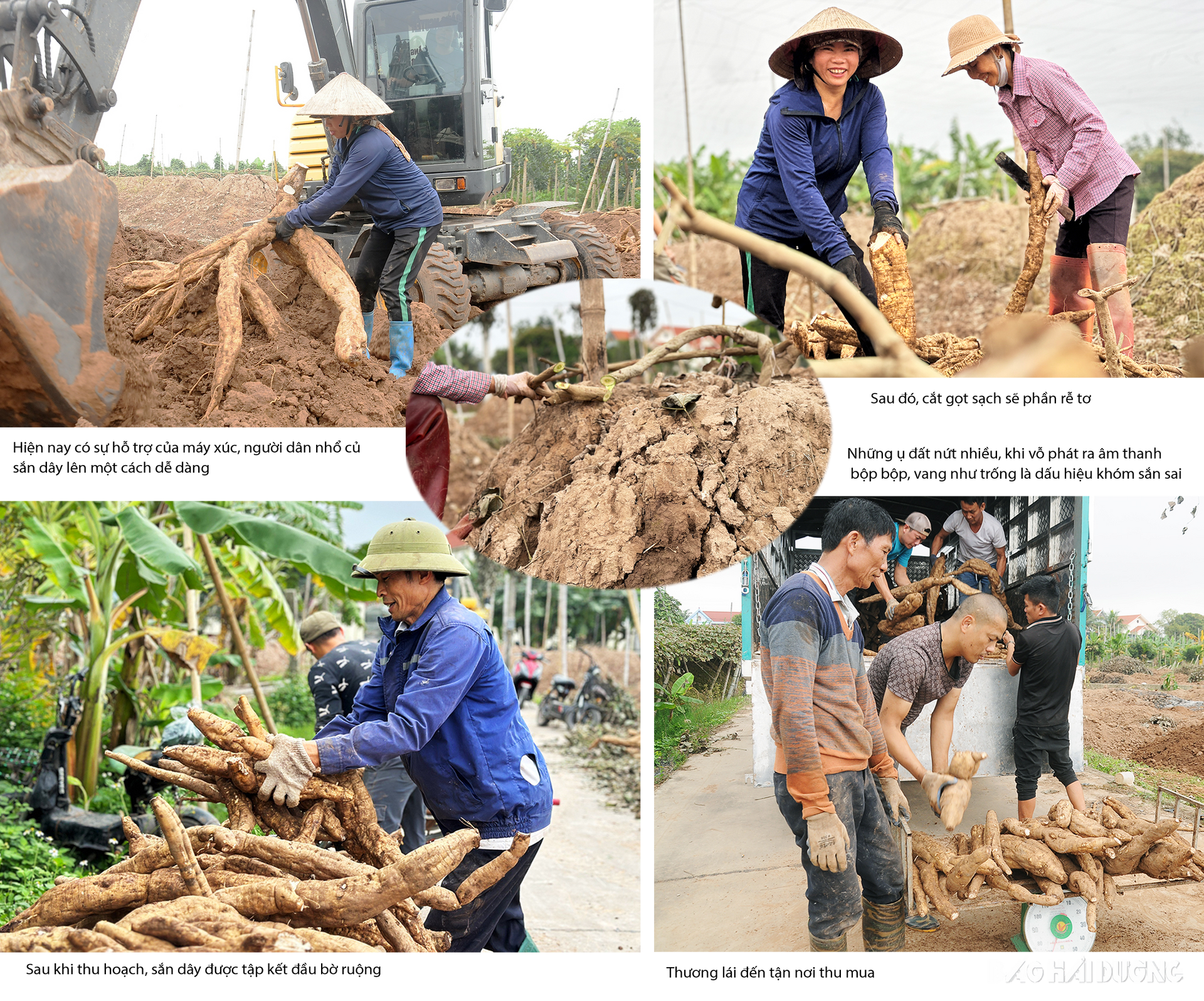
According to Mr. Minh, in the past, people had to use hoes and shovels to dig up tubers manually, which was both laborious and inefficient. “Now, machines replace human labor, with just an excavator, one can harvest up to several dozen tons of tubers in one day,” said Mr. Minh.
Clapping his hands on the mound of soil covering the cassava roots full of cracks, he "revealed" to us how to identify cassava roots with many tubers: "The mounds of soil make a popping, popping sound, the sound echoes evenly like a drum, hearing vibrations like this will mean the tubers are wrong."
As Mr. Minh said, after the strong, decisive movements of the excavator bucket, layers of plump cassava tubers were revealed, creating an exciting feeling for the harvesters. There were tubers as big as an adult's calf, long, and weighing over 20 kg. After harvesting, cassava tubers were gathered at the edge of the bank. Traders from many places came to buy. Mr. Nguyen Huu Tien in Bai Mac village, Thuong Quan commune is the owner of a field that is being harvested. His family has 5 sao with 60 cassava tubers. He said that this year's cassava tubers are big, beautiful in appearance, smooth in skin, little fiber and high in starch content. "Every clump of my family has over 100 tubers," said Mr. Tien.
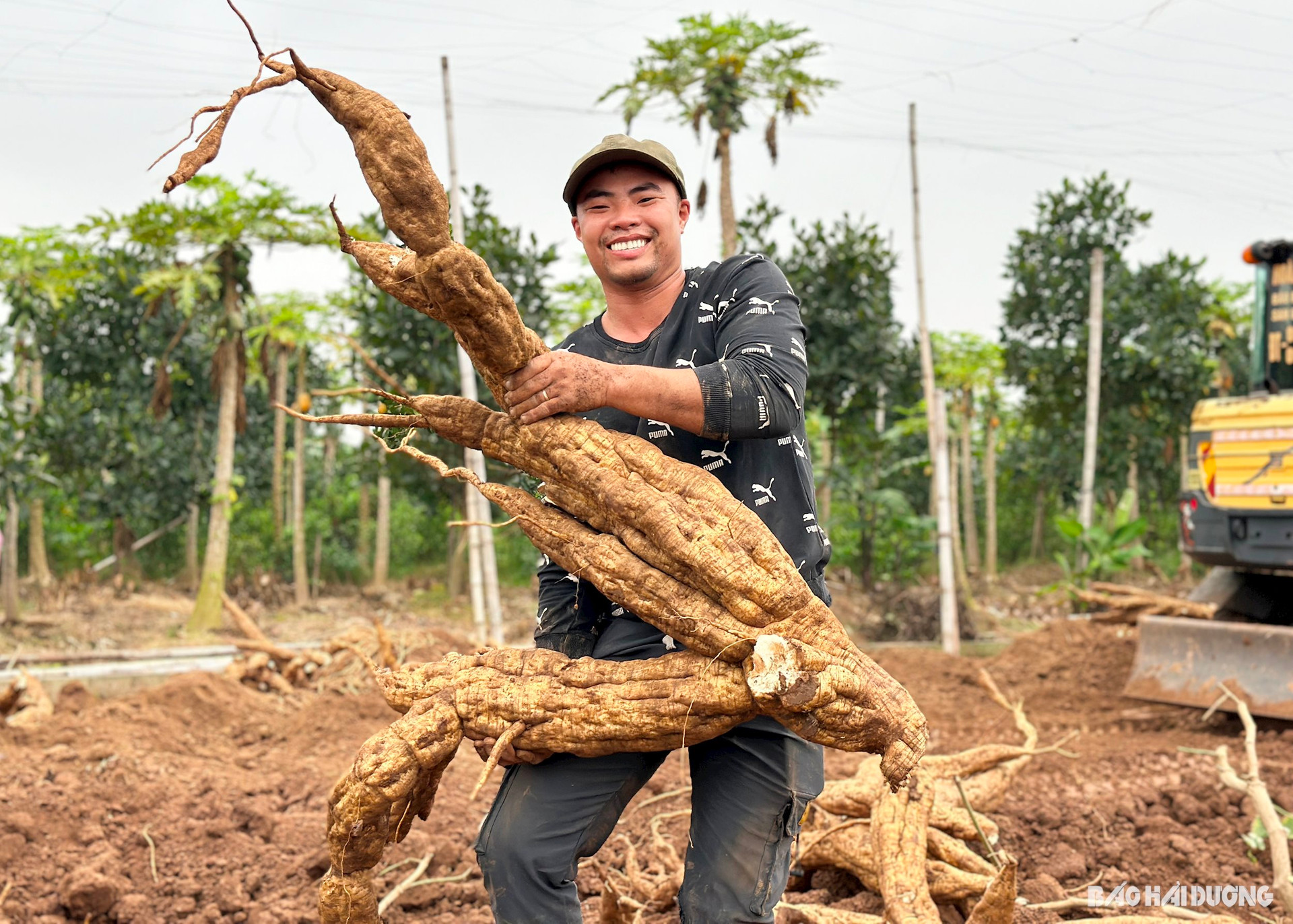
However, these are not the largest cassava clumps. At the 2024 Onion and Garlic Harvest Festival organized by Kinh Mon town last January, Mr. Hoang Van Son in Dich Son village, Hiep Hoa commune displayed his family's cassava clump weighing 275 kg for people and tourists to admire. Most recently, during the harvest, Mr. Nguyen Duc Tuyen's family in Hue Tri 1 residential area, An Phu ward unloaded a cassava clump weighing 360 kg. According to some people, in Le Ninh commune, there are households that have also harvested many cassava clumps weighing 360 kg. This is a record for cassava with a huge weight in Kinh Mon.

Thuong Quan is considered the largest cassava granary of Kinh Mon town with an area of over 80 hectares, output reaching 2,240 tons/year.
.png)
Thuong Quan commune has favorable natural conditions, especially the fertile sandy area deposited by Kinh Mon river, suitable for growing cassava. People in Thuong Quan commune have a tradition and high technique of growing cassava. Mr. Nguyen Ba Lua in Thuong Quan commune said: "No one remembers exactly when cassava appeared here. In our ancestors' time, this plant was grown naturally along the fence, climbing up bamboo bushes or mahogany trees. The tubers at that time were very small and few." Over the past 30-40 years, people in Thuong Quan commune have continuously improved cassava growing techniques, resulting in increasingly high yields.
Cassava is planted from May of the previous year to February of the following year and will be harvested. According to Mr. Lua and many people in Thuong Quan commune, in order for cassava to produce large, many tubers with good quality tubers, three factors must be met: strange soil, fertile alluvium, loose, good water retention; large, airy trellis area; sufficient water supply for the plant. Therefore, people often replace new soil or intercrop cassava with other plants to improve the soil, regularly add cow, chicken, and pig manure; humus creates moisture for the soil. "We often take advantage of the surface area of ponds and river banks to make trellises for cassava to climb. These places are both airy and provide enough water, the tubers will be large and of good quality," said Mr. Nguyen Huu Tien in Thuong Quan commune.
.jpg)
In the technique of sowing, people also have many ways to do it. “Initially, the seedling vines are circled like a basket for a pot. Then we insert the branches into three forks and then use the grafting technique. The grafting method currently gives good yield, many branches, and healthy trees,” said Mr. Lua.
“There was a time when we could buy 1 tael of gold for selling 1 cassava root. My parents once sold 3 cassava roots and saved up enough money to buy a calf,” said Mr. Lua. The cassava plant has contributed to bringing high economic value, changing the lives of people here. In 2023, the value of cassava in Thuong Quan commune reached over 32 billion VND, accounting for 11.27% of the total agricultural revenue of the commune. Currently, Thuong Quan has about 500 households growing cassava, concentrated in Bai Mac village, Que Linh. With the selling price of fresh tubers right in the field at 14,000-15,000 VND/kg, many families earn more than 1 billion VND/crop. To support people growing cassava, in recent times, the Farmers' Association of Thuong Quan commune has opened training classes on cassava planting and care techniques, and provided fertilizers and pesticides to people. “Thuong Quan Commune is focusing on building collective brands and traceability stamps for local agricultural products, including kudzu,” said Mr. Bui Van Hao, Vice Chairman of Thuong Quan Commune People's Committee.
.jpg)

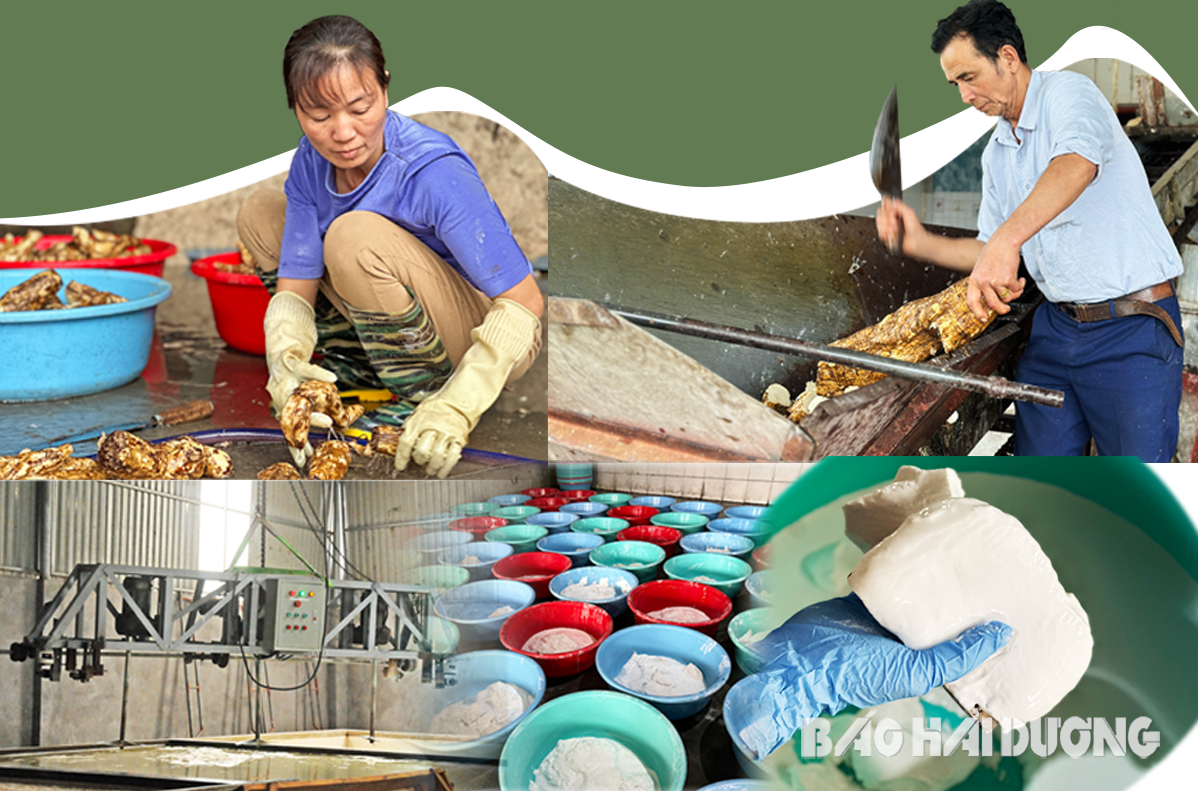
Previously, Kinh Mon cassava was mainly sold in the form of fresh tubers, with low economic value. Currently, cassava has been processed into starch with high technology, bringing great economic value.
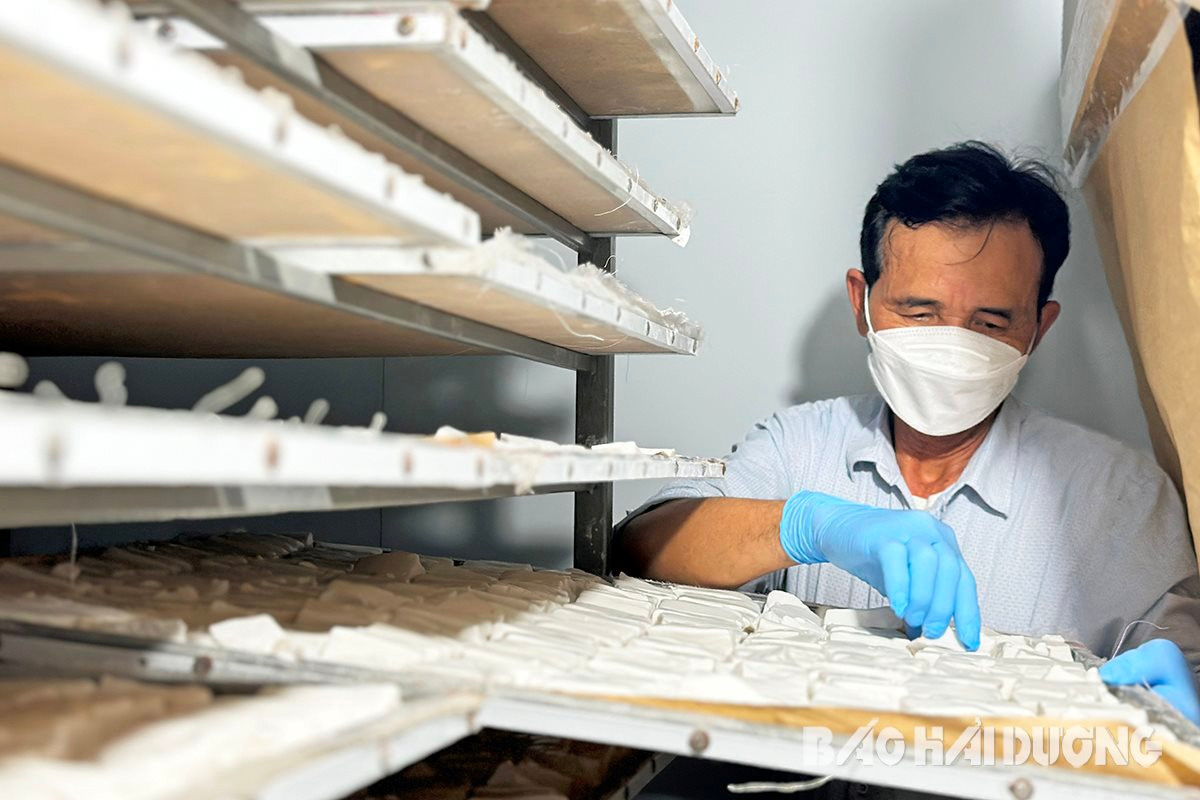
Ms. Nguyen Thi Nhan, Deputy Director of Thanh Nhan Clean Agricultural Products Cooperative, a reputable tapioca starch production facility in Kinh Mon town, said that the cooperative has just invested in a Japanese technology freeze-drying system worth nearly 1 billion VND. “If you want your products to be better and better, you must invest and constantly research and innovate,” Ms. Nhan said. With 15 years of experience in producing and processing tapioca starch, Ms. Nhan has never stopped at the existing process.
Not only investing in product quality, Ms. Nhan's family cooperative also focuses on improving labels and packaging. The product has a QR code for consumers to trace its origin. To better access the market, Thanh Nhan's tapioca starch products have been available on e-commerce platforms Lazada, Shopee... for many years now.
.jpg)
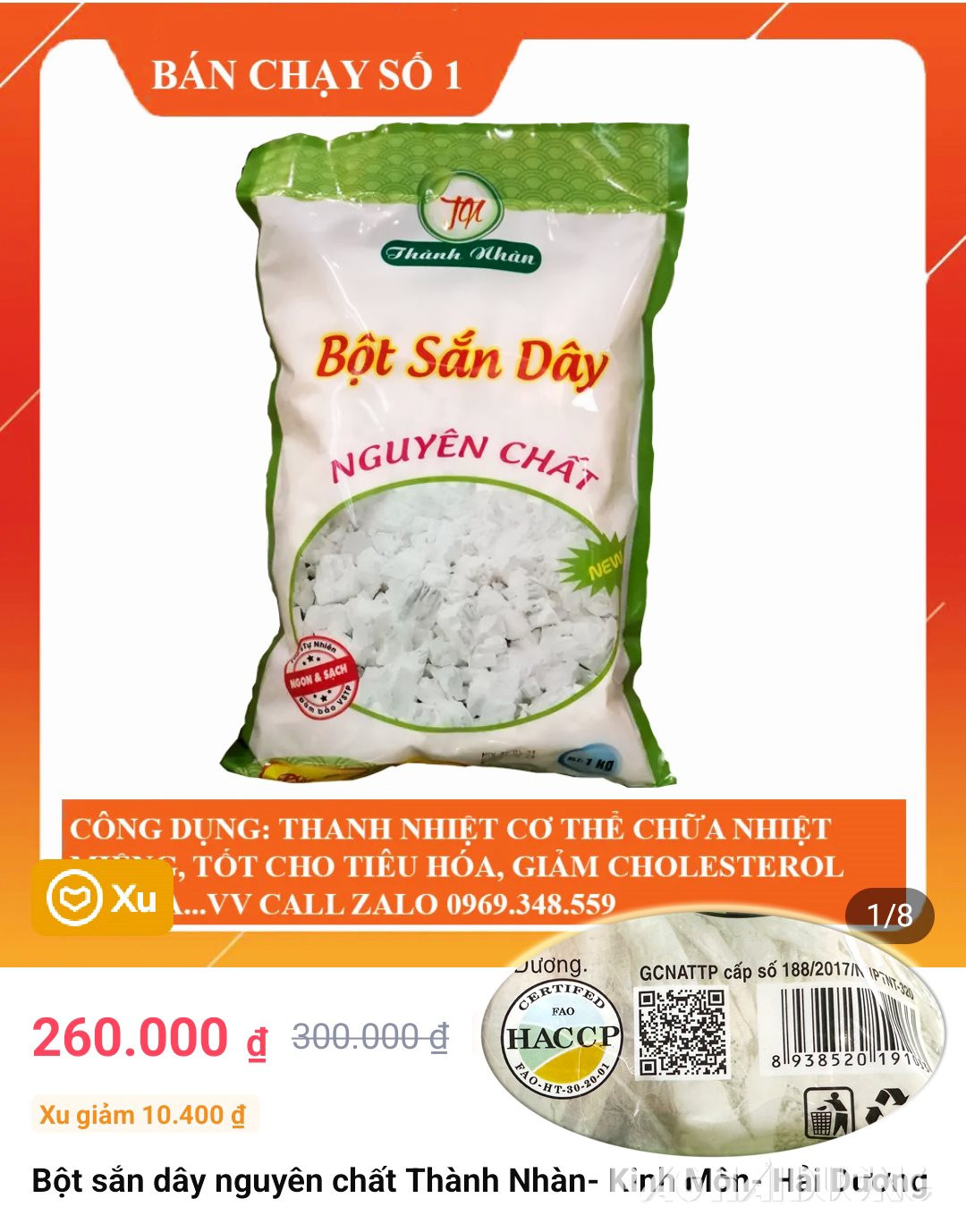
With an output of 50 tons of flour per year, Thanh Nhan's cassava flour products are not only available in many provinces and cities across the country but are also exported to markets in India, Korea, France, Japan, Taiwan (China)... According to Ms. Nhan, every 5 kg of fresh tubers will produce 1 kg of dry cassava flour. With the factory price of 150,000-180,000 VND/kg of flour, after deducting expenses, her family earns a profit of 500-600 million VND/crop of cassava. The facility also creates jobs for 15 workers with an income of 7-12 million VND/person/month.
Kinh Mon town has about 40 cassava starch processing facilities. Among them, many processing facilities use modern technology and have brands. In addition to Thanh Nhan cassava starch meeting 4-star OCOP standards, certified as a typical national rural industrial product in 2023, Phuong Khiem cassava starch also meets 3-star OCOP standards. In 2018, Kinh Mon cassava starch was honored as the Golden Agricultural Brand of Vietnam Agriculture.
Arrowroot tubers are not only used as a rustic dish when boiled or cut into pieces, but also processed into arrowroot powder. Arrowroot powder is further processed into refreshing drinks or many nutritious, refreshing, and healthy dishes.
.jpg)
According to Mr. Nguyen Xuan Ha, Head of the Economic Department of Kinh Mon town, the town currently has 262 hectares of cassava, mainly distributed in Thuong Quan, An Phu, Lac Long, Hiep Hoa... Fresh root output reaches over 8,000 tons/year. Processing cassava starch brings high economic efficiency, but currently the amount of processed cassava only reaches 1/10 of the fresh root output (producing about 160 tons of dry powder). The rest is exported to provinces and cities such as Thai Binh, Thai Nguyen, Nam Dinh, Hanoi... Thus, the "room" for cassava starch production and processing in Kinh Mon is still very large.
Regarding this issue, Mr. Le Van Dien, Vice Chairman of Kinh Mon Town People's Committee, said that the local Party Committee and government always pay attention to and encourage localities with potential to maintain and develop cassava growing areas. "In the coming time, the town will continue to create conditions and call on businesses to invest in deep processing and link up along the value chain to increase product value and sustainably develop cassava in particular and typical agricultural products of Kinh Mon in general," Mr. Dien affirmed.
.jpg)
Recently, a Japanese delegation took samples of kudzu flowers in some localities in the town to study tea production. If qualified, this is also a favorable condition, opening up new opportunities for kudzu plants.
Content:LE HUONG
Presentation, photos:TUAN ANH